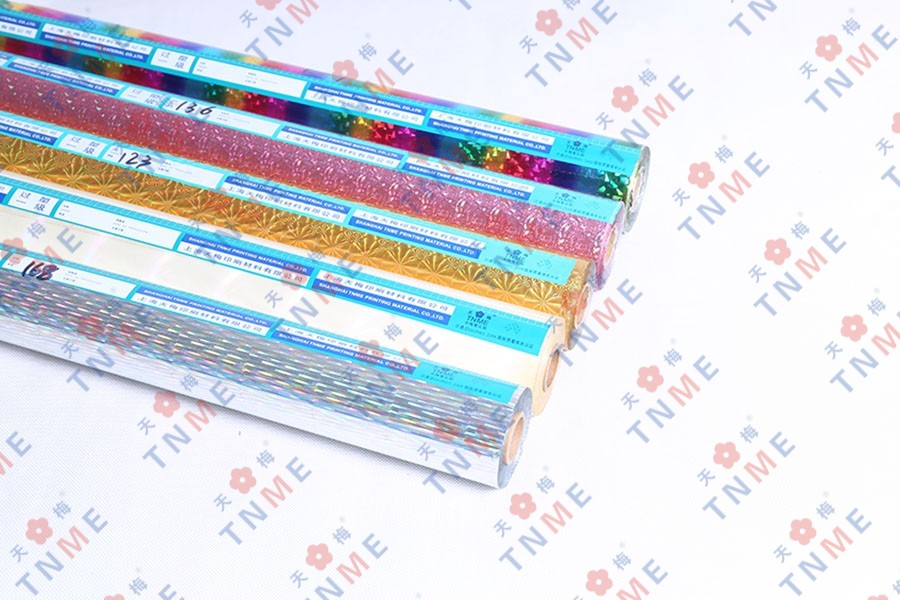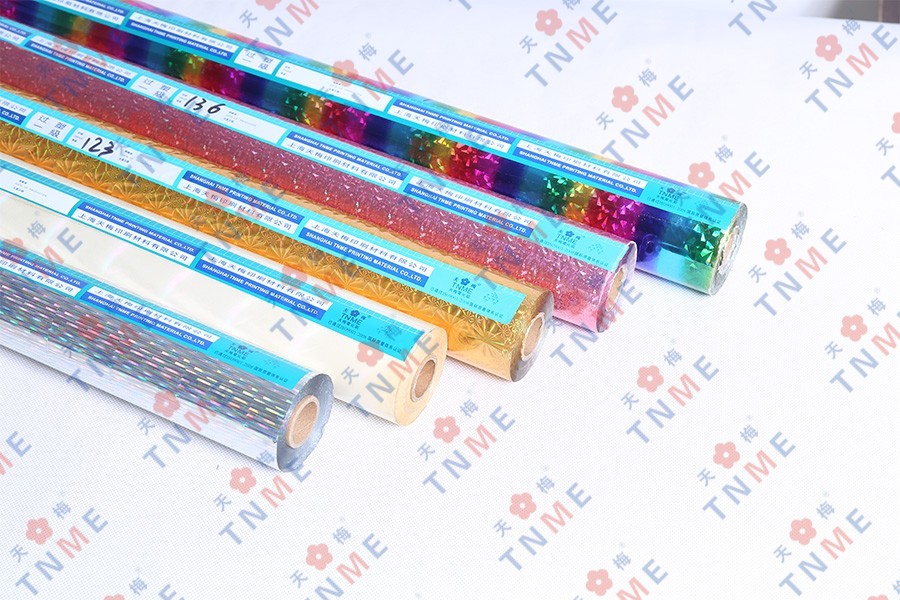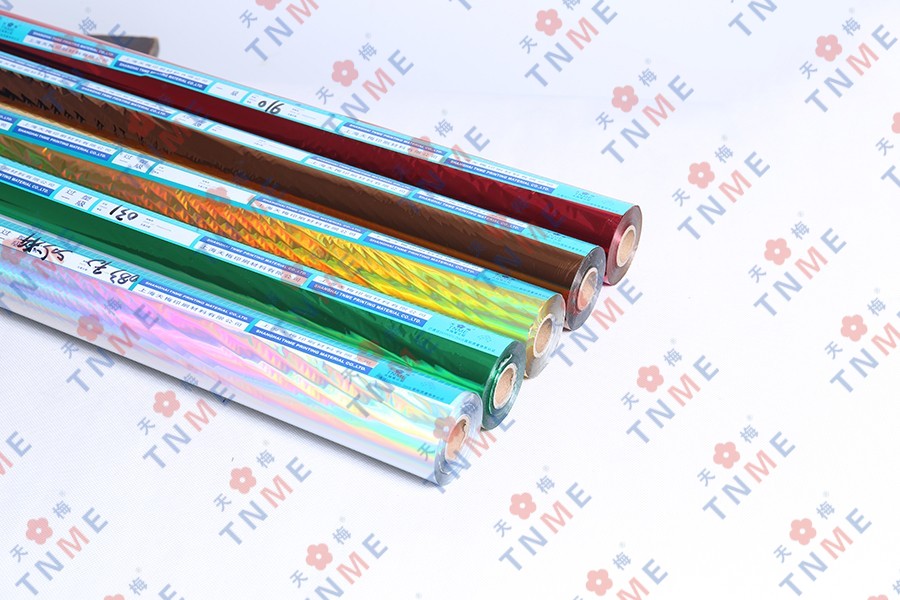How Does the Application Process Differ Between Foil With and Without Glue?
In the realm of decorative surfaces and premium packaging, the application of metallic and pigmented finishes is a critical process that defines the quality, efficiency, and cost-effectiveness of production. Two primary methods dominate this field: traditional foil with glue and the increasingly popular foil without glue, also known as self-adhesive or glue-free foil. For wholesalers, buyers, and production managers, understanding the distinction between these two application processes is not merely academic; it directly impacts machinery investment, workflow, labor requirements, and the final product’s quality.
Understanding the Core Mechanisms: Adhesion Principles
The most profound difference between the two processes lies in the fundamental principle of adhesion. This core distinction dictates every subsequent step, from material preparation to machine configuration.
Traditional Foil with Glue
The traditional hot stamping process is a transfer method reliant on an external adhesive. The foil itself is a carrier film (typically polyester) coated with successive layers: a release layer, the decorative lacquer (color, metal, etc.), and sometimes a protective sizing layer. Crucially, it does not contain adhesive. The adhesive is a separate product, a specialized compound in solid or paste form, often based on synthetic resins. This adhesive is applied to the substrate beforehand or, more commonly, is pre-coated on a stamping die or roller. The process of adhesion is activated by the combination of three elements: heat, pressure, and dwell time. The heat melts the solid adhesive, allowing it to become tacky and flow onto the substrate. Pressure then forces the foil into intimate contact with this activated adhesive. After the dwell time (the period pressure is maintained), the tooling is lifted. The adhesive has now bonded to the substrate and, critically, has also bonded to the specific layer of the foil designed to release. As the carrier film is pulled away, the decorative layer fractures at the release layer, leaving the design securely glued to the surface.
Foil without glue
In contrast, foil without glue is an all-in-one system. The adhesive is already incorporated into the foil’s construction during manufacturing. This integrated adhesive layer is typically a heat-activated, thermoplastic polymer coated directly onto the back of the decorative layer. The process of adhesion is simplified, requiring only heat and pressure. The heat from the stamping die or roller activates the internal adhesive layer, causing it to become tacky and gain its adhesive properties. The applied pressure then ensures immediate and complete bonding to the substrate. Upon lifting the tooling, the carrier film cleanly releases, leaving the decoration—now bonded by its own activated adhesive—on the surface. There is no need for a separate adhesive application station, and the chemical bonding process is more straightforward, eliminating variables associated with external glue compatibility and curing.
Pre-Application Requirements and Setup
The differences in core mechanisms lead to significant divergences in the preparatory steps and machine setup required before production can begin.
Traditional Foil with Glue Setup
The setup for traditional foil is often more complex and time-consuming. It involves managing two separate consumables: the foil roll and the adhesive. The adhesive must be selected with extreme care, as its compatibility with both the substrate and the specific type of foil is paramount. An incorrect match can lead to poor adhesion, hazing, or incomplete transfer. The application machinery must be equipped with a system to apply this adhesive. This can be a separate unit that pre-applies adhesive to the substrate web, or more commonly, a mechanism to apply adhesive directly to the stamping die or silicone roller. This requires precise calibration to ensure an even, consistent layer of adhesive is deposited. The machine operator must then carefully coordinate the settings for the adhesive application system with the main hot stamping parameters. This multi-variable setup demands a higher level of operator skill and experience to achieve perfect results, often involving test runs and adjustments that consume time and material.
Foil without glue Setup
The setup process for foil without glue is markedly simplified. Because the adhesive is integral to the foil product, there is no separate adhesive to source, store, or apply. This eliminates the entire adhesive application system from the setup equation. The machine operator only needs to concern themselves with the foil itself and the direct stamping parameters. The foil roll is loaded into the machine like a traditional foil, but the machine does not require the additional components for handling liquid or solid glue. This reduction in variables makes the process more straightforward and significantly reduces the potential for setup error. It allows for faster job changeovers, as cleaning glue reservoirs and application heads is completely avoided. This simplicity is a key driver for its adoption in environments with short production runs and a high need for operational agility.
The Application Process: A Step-by-Step Comparison
The operational phase further highlights the procedural differences between the two methods. The following table provides a concise overview of these critical steps.
| Process Step | Traditional Foil with Glue | Foil without glue |
|---|---|---|
| 1. Adhesive Application | Mandatory separate step. Adhesive is applied via a separate unit to the die or substrate. | Not required. Adhesive is pre-applied and integrated into the foil construction. |
| 2. Activation | Heat and pressure are applied to melt the external adhesive and bond it to the substrate. | Heat and pressure are applied solely to activate the internal adhesive layer on the foil. |
| 3. Bonding | The activated external adhesive creates a bond with the substrate and the foil’s release layer. | The activated internal adhesive creates a direct bond between the foil’s decoration and the substrate. |
| 4. Release | The carrier film is peeled away. The decorative layer fractures at the release layer, held by the glue. | The carrier film is peeled away. The decorative layer, with adhesive now bonded to the substrate, releases. |
| Key Variables | Adhesive type, adhesive application thickness, heat, pressure, dwell time. | Heat, pressure, dwell time. |
Detailed Walkthrough: Traditional Process
The process begins with the application of adhesive. If using a die, the adhesive is often applied to the heated die face, which then stamps onto the substrate. The heat from the die begins to melt the glue upon contact. The foil is then introduced between the die and the substrate. The die presses down again with heat and pressure, now forcing the foil into the molten adhesive. The dwell time allows the adhesive to fully wet the substrate and anchor to the foil’s release layer. As the die retracts, the careful peeling action separates the carrier film, transferring the design. The operator must constantly monitor the quality of the adhesive application, as unevenness will directly result in an imperfect stamped image.
Detailed Walkthrough: Glueless Process
The process for foil without glue is a more direct transfer. The foil is positioned between the heated die and the substrate. The die, which requires no pre-application of glue, is stamped down with heat and pressure. This heat penetrates the carrier film and instantly activates the themoplastic adhesive layer coated on the decorative film. The pressure ensures immediate and uniform contact between this activated adhesive and the substrate. The bond forms instantly. Upon retraction of the die, the carrier film is cleanly peeled back, leaving the decorated layer firmly attached. The absence of a separate bonding agent (the external glue) makes the transfer seem more immediate and reduces the number of factors that can interfere with a perfect result.
Material and Substrate Considerations
The choice of substrate is a critical factor that influences which process is viable or preferable, and each method has its own considerations.
Traditional Foil and Substrate Compatibility
The traditional method, while sometimes seen as more complex, has a long history of use on a vast array of substrates. However, its success is entirely dependent on the correct pairing of adhesive and substrate. For example, a non-porous substrate like plastic or coated paper requires a specific adhesive formulation designed to etch into or bond with that surface chemically. A porous substrate like unfinished wood or paper may require a different adhesive that can penetrate the fibers. The operator must possess deep knowledge of material science to make these pairings successfully. This process can be more forgiving on certain challenging substrates because the adhesive can be specially selected and formulated to overcome surface energy issues.
Foil without glue and Substrate Compatibility
Foil without glue is renowned for its excellent performance on a wide range of standard substrates, including many plastics, coated boards, and synthetic materials. The integrated adhesive is designed to have broad compatibility. However, its performance can be more specific to the product formulation. Not all glue free foil products are created equal; some are engineered for specific material families. The key advantage is simplicity: the buyer selects a foil designed for their substrate (e.g., foil for PVC or foil for coated paper), and the compatibility is built-in. There is no need to test and source a separate glue. The potential limitation is that for highly specialized or problematic substrates with very low surface energy or contamination, a custom-formulated traditional adhesive might still be the only solution, whereas a generic foil without glue might not adhere properly.
Impact on Production Efficiency and Output
The differences in the application processes have direct and measurable consequences on production throughput, cost, and operational overhead.
Efficiency of the Traditional Process
The traditional process can be susceptible to more downtime. This downtime stems from several factors: the need to frequently clean adhesive application systems to prevent clogging, the time required to change and set up for a different adhesive when switching substrates, and the potential for more frequent quality issues related to adhesive application (e.g., streaking, pooling). While modern automated machines minimize this, it remains a inherent characteristic of the two-component system. The consumption of two separate consumables also adds a layer of complexity to inventory management and cost calculation.
Efficiency of the Glueless Process
The application process for foil without glue is inherently geared towards higher production efficiency and reduced waste. The elimination of the adhesive application step translates directly to faster setup times and quicker job changeovers. This is a significant advantage for manufacturers running short to medium production runs where minimizing downtime is crucial for profitability. There is also no risk of issues stemming from the glue application system, such as clogged nozzles or uneven coating. Inventory management is simplified, as there is only one consumable—the foil itself—to stock and track. Furthermore, the reduced complexity lowers the skill requirement for machine operators, reducing training time and potential for human error. This contributes to a more streamlined and cost-effective converting process.
Quality and Finish of the Final Product
The end goal of both processes is a high-quality decorative finish. The differences in process can lead to subtle but sometimes important differences in the final product.
Aesthetic Results from Traditional Foiling
When executed perfectly, traditional foiling can produce exceptionally sharp, durable, and high-fidelity results. The use of a separately applied adhesive can, in some cases, allow for a slightly thicker build of coating, which can enhance the perceived depth and richness of the metallic finish. The durability is highly dependent on the quality of the adhesive and its resistance to environmental factors like scratching, chemicals, and UV light, which can be selected for the specific application.
Aesthetic Results from Glueless Foiling
High-quality foil without glue is engineered to produce a finish that is virtually indistinguishable from traditional foil to the naked eye. It offers excellent scratch resistance and durability for most applications. One of its noted advantages is the potential for a cleaner release and sharper definition on very fine details and text. This is because the transfer layer is often thinner and the bonding process more immediate, reducing the risk of adhesive bleed that can sometimes slightly blur intricate edges in traditional foiling. The finish is consistent and reliable, provided the correct foil-for-substrate is used.




 English
English 中文简体
中文简体

















